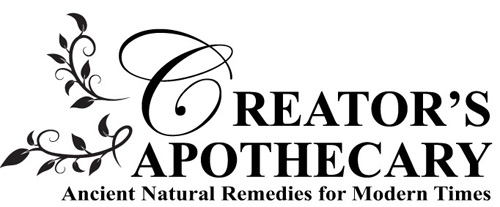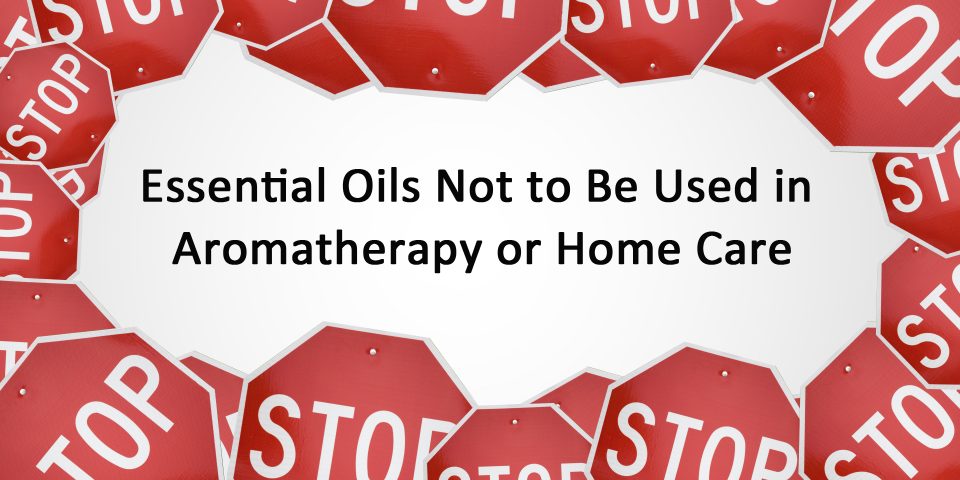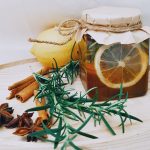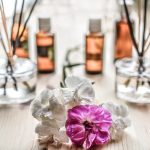Essential Oils Not to Be Used in Aromatherapy or Home Care
In her book, The Encyclopedia of Essential Oils: The Complete Guide to the use of Aromatic Oils in Aromatherapy, Herbalism, Health & Well-Being, Julia Lawless identifies the following essential oils as oils that have NO USE in aromatherapy or in the home. Many of them are extremely TOXIC, some of them are irritants, etc. Keep this list handy when you are considering what you are going to blend, and the purposes for which you are making it. Caution should always be used when using Essential Oils, and your healthcare provider should always be consulted as some oils interact with drugs you may be taking.
Essential Oil General Safety Information:
Essential Oils (EOs) are highly concentrated extractions of plants and can be harmful if not used carefully. Incorporating EOs into your lifestyle should not cause unnecessary work, but it is important to heed all safety precautions. Never take EOs internally, even if a label say it is safe for consumption by mouth. Never put undiluted EOs directly onto your skin (NEAT) to avoid sensitization of skin, and never apply NEAT to broken skin. Some EOs can cause irritation, sensitization or allergic reactions in some individuals. When using a new oil topically for the first time, perform a skin patch test on a small area of the skin. Some EOs are phototoxic and can cause irritation, inflammation, blistering, redness and/or burning when exposed to UVA rays of the sun. Discontinue using EOs immediately if you encounter any irritation, redness or reaction. Take care when adding EOs directly to bathwater. EOs do not stayed mixed in water, and can, therefore “pool” causing the EO to touch body areas in full strength with the potential for irritation. Some EOs should be avoided during pregnancy or by those with asthma, epilepsy, or other health conditions. Avoid using EOs near the genitals, mouth, nose, eyes and ears. Extreme caution should be used with children and elderly (due to medication mix). Care should be taken when using EOs near animals as not all EOs are safe to use on dogs, cats, birds, horses or other pets. EOs are flammable; keep them away from fire hazards. These statements have not been evaluated by the Food and Drug Administration. These oils are not intended to diagnose, treat, cure or prevent any disease.
Essential Oils Not to Be Used in Aromatherapy or Home Care include:
ALMOND, BITTER Prunus dulcis var. amara: AROMATHERAPY/HOME USE: None. Prussic acid, also known as hydrocyanic acid or cyanide, is a well-known poison. Benzaldehyde is also moderately toxic. ‘Should not be used in therapy either internally or externally.’2
ARNICA Arnica montana: AROMATHERAPY/HOME USE: None. The essential oil is highly toxic and should never be used internally or on broken skin. However, the tincture or arnica ointment are valuable additions to the home medicine cabinet.
BASIL, EXOTIC Ocimum basilicum: AROMATHERAPY/HOME USE: None. Methyl chavicol is moderately toxic and irritating to the skin: ‘the methyl chavicol content of Comoran basil is sufficient reason to discard it for therapeutic usage in favor of the French type.’6 There has also been some recent concern over the possible carcinogenic effects of methyl chavicol. Basil should be avoided during pregnancy.
BIRCH, SWEET Betula lenta: AROMATHERAPY/HOME USE: None. Methyl salicylate, the major constituent, is not exactly toxic but very harmful in concentration.’ It can be absorbed through the skin, and fatal poisoning via this route has been reported.’12’ It is also classed as an environmental hazard or marine pollutant.
BOLDO LEAF Peumus boldus: AROMATHERAPY/HOME USE: None. Extremely toxic. ‘The oil has powerful therapeutic effects, and it can be considered harmful to the human organism even when used in very small doses … should not be used in therapy, either internally or externally.’14
BROOM, SPANISH Spartium junceum: AROMATHERAPY/HOME USE: None. Sparteine, which is contained in the flowers as the main active constituent, is toxic. In large doses, it causes vomiting, renal irritation, weakens the heart, depresses the nerve cells and lowers the blood pressure, and in extreme cases causes death.
BUCHU Agothosma betulina: AROMATHERAPY/HOME USE: None. Should not be used during pregnancy. The toxicity of buchu is unknown but since B. betulina yields oils high in diophenols and B. crenulate yields oils high in pulegone, they should both be regarded as questionable at present. (Lawless Encyclopedia updated in 2014).
CALAMUS Acorus calamus var. angustatus: AROMATHERAPY/HOME USE: None. Oral toxin. The oil of calamus is reported to have carcinogenic properties. ‘Should not be used in therapy, whether internally or externally.’19
CASSIA Cinnamomum cassia: AROMATHERAPY/HOME USE: None. ‘Should never be used on the skin (one of the most hazardous oils).’21 Dermal toxin, dermal irritant, dermal sensitizer, mucous membrane irritant.
CHERVIL Anthriscus cerefolium: AROMATHERAPY/HOME USE: None. Methyl chavicol and anethole are known to have toxic and irritant effects; methyl chavicol is reported to have possible carcinogenic effects. Since these constitute the major proportion of the essential oil, it is best avoided for therapeutic use.
DEERTONGUE Carphephorus odoratissimus: AROMATHERAPY/HOME USE: None. ‘Coumarin has toxic properties including liver injury and haemorrhages.’31 (There is also the possibility of dermal irritation and phototoxicity due to the lactones present.)
ELECAMPANE Inula helenium: AROMATHERAPY/HOME USE: None. NB In Phytoguide I, sweet inula (I. odora or I. graveolens), a deep green oil, is described as ‘queen of mucolytic essential oils’, having properties as diverse as: ‘anti-inflammatory, hyperthermic, sedative, cardia-regulative, diuretic and depurative’.33 It is described as being an excellent oil for the cardiopulmonary zone including asthma, chronic bronchitis and unproductive coughs. This variety of Inula seems to avoid the sensitization problems of elecampane, at least when it is used as an inhalation or by aerosol treatment. Non-toxic, non-irritant; however, it is a severe dermal sensitizer. In clinical tests it caused ‘extremely severe allergic reactions’ in twenty-three out of twenty-five volunteers. On the basis of these results, it is recommended that the oil ‘should not be used on the skin at all’.32
HORSERADISH Armoracia rusticana: AROMATHERAPY/HOME USE: None. Oral toxin, dermal irritant, mucous membrane irritant. ‘This is one of the most hazardous of all essential oils. It should not be used in therapy either externally or internally.’41
JABORANDI Pilocarpus jaborandi: AROMATHERAPY/HOME USE: None. Oral toxin, skin irritant, abortifacient.
MELILOTUS Melilotus officinalis: AROMATHERAPY/HOME USE: None. Mainly coumarins – melilotic acid and orthocoumaric acid. Safety data in 1953 in some countries including the USA, coumarin was banned from use in flavourings due to toxicity levels. Some coumarins are also known to be phototoxic.
MINT, CORNMINT Mentha arvensis: AROMATHERAPY/HOME USE: None. Use peppermint in preference, since it is not fractionated like the commercial cornmint oil and has a more refined fragrance. Non-toxic, non-irritant (except in concentration); may cause sensitization in some individuals. Menthol is a dermal irritant.
MUGWORT, Artemisia vulgaris: AROMATHERAPY/HOME USE: None. ‘It should not be used in therapy either internally or externally.’58 Oral toxin, due to high thujone content. Abortifacient.
MUSTARD Brassica nigra: AROMATHERAPY/HOME USE: None. ‘It should not be used in therapy
either externally or internally.’59 Oral toxin, dermal toxin, mucous membrane irritant. It is considered one of the most toxic of all essential oils.
OREGANO, COMMON Origanum vulgare: AROMATHERAPY/HOME USE: None. ‘Should not be used on the skin at all.’68 Dermal toxin, skin irritant, mucous membrane irritant. Avoid during pregnancy.
OREGANO, SPANISH Thymus capitatus: AROMATHERAPY/HOME USE: None. ‘Should not be used on the skin at all.’69 Dermal toxin, skin irritant, mucous membrane irritant.
ORRIS Iris pallida: AROMATHERAPY/HOME USE: None. However, the powdered orris, which is a common article, may be used as a dry shampoo, a body powder, a fixative for potpourris, and to scent linen. The fresh root causes nausea and vomiting in large doses. The oil and absolute are much adulterated or synthetic – ‘true’ orris absolute is three times the price of jasmine.
PENNYROYAL Mentha pulegium: AROMATHERAPY/HOME USE: None. ‘Should not be used in aromatherapy whether internally or externally.’73 Oral toxin. Abortifacient (due to pulegone content). Ingestion of large doses has resulted in death.
PINE, DWARF Pinus mugo var. pumilio: AROMATHERAPY/HOME USE: None. Dermal irritant, common sensitizing agent; otherwise, nontoxic. It is best avoided therapeutically due to irritant hazards.
RUE Ruta graveolens: AROMATHERAPY/HOME USE: None. ‘Should not be used at all in aromatherapy.’83 Oral toxin (due to main constituent). Skin and mucous membrane irritant. Abortifacient. ‘Rue oil should never be used in perfumery or flavor work.’ 82
SAGE, COMMON Salvia officinalis: AROMATHERAPY/HOME USE: None. Oral toxin (due to thujone). Abortifacient; avoid in pregnancy. Avoid in epilepsy. Use with care or avoid in therapeutic work altogether – Spanish sage or clary sage are good alternatives.
SANTOLINA Santolina chamaecyparissus: AROMATHERAPY/HOME USE: None. Oral toxin. ‘There is no safety data available … likely to be dangerously toxic.’85
SASSAFRAS Sassafras albidum: AROMATHERAPY/HOME USE: None. ‘Should not be used in therapy, whether internally or externally.’87 Highly toxic – ingestion of even small amounts has been known to cause death. Carcinogen. Irritant. Abortifacient.
SAVINE Juniperus sabina: AROMATHERAPY/HOME USE: None. ‘Should not be used in therapy,
whether internally or externally.’89 Oral toxin. Dermal irritant. Abortifacient. ‘The oil is banned from sale to the public in many countries due to its toxic effects (nerve poison and blood circulation stimulant).’88
SAVORY, SUMMER Satureja hortensis: AROMATHERAPY/HOME USE: None. ‘Should not be used on the skin at all.’91 Dermal toxin, dermal irritant, mucous membrane irritant. Avoid during pregnancy.
SAVORY, WINTER Satureja montana: AROMATHERAPY/HOME USE: None. ‘Should not be used on the skin at all.’93 Dermal toxin, dermal irritant, mucous membrane irritant. Avoid during pregnancy.
TANSY, Tanacetum vulgare: AROMATHERAPY/HOME USE: None. ‘Should not be used in aromatherapy whether internally or externally.’98 Oral toxin – poisonous due to high thujone content. Abortifacient. Blue Tansy does not contain Thujone according to Tisserand.
THUJA Thuja occidentalis: AROMATHERAPY/HOME USE: None. ‘Should not be used in aromatherapy either internally or externally.’101 Oral toxin – poisonous due to high thujone content. Abortifacient.
TONKA Dipteryx odorata: AROMATHERAPY/HOME USE: None. Oral and dermal toxin, due to high coumarin content.
VANILLA Vanilla planifolia: AROMATHERAPY/HOME USE: None. Non-toxic, common sensitizing agent. Widely adulterated.
WINTERGREEN Gaultheria procumbens: AROMATHERAPY/HOME USE: None. ‘Avoid both internally and externally.’110 Toxic, irritant and sensitizing – an environmental hazard or marine pollutant. The true oil is almost obsolete, having been replaced by synthetic methyl salicylate. See also sweet birch oil.
WORMWOOD Artemisia absinthium: AROMATHERAPY/HOME USE: None. ‘Should not be used in therapy either internally or externally.’113 Toxic. Abortifacient. Habitual use can cause restlessness, nightmares, convulsions, vomiting and, in extreme cases, brain damage. In 1915 the French banned the production of the drink Absinthe with this plant, due to its narcotic and habit-forming properties.
References
The Encyclopedia of Essential Oils by Julia Lawless
– and –
2. Tisserand, R. The Essential Oil Safety Data Manual, p.76.
6. Tisserand, R. The Essential Oil Safety Data Manual, p. 102.
12. Mills, S.Y. The A-Z of Modern Herbalism, p.36.
14. Grieve, M. A Modern Herbal, 127.
19. Tisserand, R. The Essential Oil Safety Data Manual, p.79.
21. Arctander, S. Perfume and Flavor Materials of Natural Origin, p. 157.
31. Tisserand, R. The Essential Oil Safety Data Manual, p.82.
32. Leung, A.Y. Encyclopedia of Common Natural Ingredients, p. 149
33. Leung, A.Y. Encyclopedia of Common Natural Ingredients, p. 155
41. Maury, M. Guide to Aromatherapy, p.104.
58. Tisserand, The Essential Oil Safety Data Manual, p.86.
59. Tisserand, The Essential Oil Safety Data Manual, p.86.
68. Tisserand, R. The Essential Oil Safety Data Manual, p.88
69. Tisserand, R. The Essential Oil Safety Data Manual, p.88
73. Tisserand, R. The Essential Oil Safety Data Manual, p.89
82. Arctander, S. Perfume and Flavor Materials of Natural Origin, p. 563.
83. Tisserand, R. The Essential Oil Safety Data Manual, p.107
85. Culpeper. N. Complete Herbal, p.211
87. Tisserand, R. The Essential Oil Safety Data Manual, p.90
88. Arctander, S. Perfume and Flavor Materials of Natural Origin, p. 581.
89. Tisserand, R. The Essential Oil Safety Data Manual, p.92
91. Tisserand, R. The Essential Oil Safety Data Manual, p.69
93. Tisserand, R. The Essential Oil Safety Data Manual, p.69
98. Tisserand, R. The Essential Oil Safety Data Manual, p.94
101. Tisserand, R. The Essential Oil Safety Data Manual, p.96
110. British Herbal Pharmacopoeia, 1983 p.233.
113. Le Strange, R. A History of Herbal Plants, p.72.
Grace to you and peace from God our Father and the Lord Jesus Christ. Philippians 1:2
Til next time,





